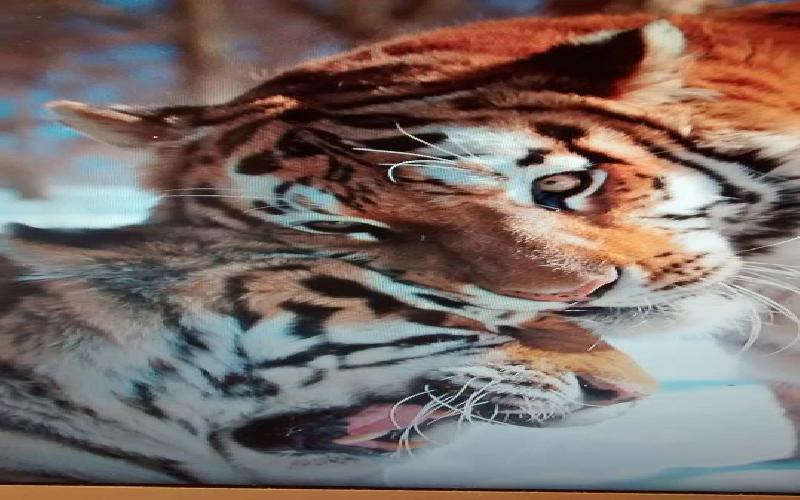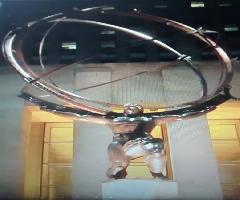The rise of the Kindle has left the publishing industry in a definite state of uncertainty beginning around 2008. In this climate, Young Adult Novelist Staton Rabin lost both her long time Simon and Schuster editor and her agent, while the fluidity of the Irvington resident's bottom line and publishing possibilities was subjected to the same doubt. This obviously put her on a scramble to add supplemental incomes streams she had long established as a freelance writer and a screenplay analyst. Luckily, her youthful passion for photography (and working knowledge of filmmaking) would suddenly illuminate above her and lead to
yet another career as a photojournalist. The typical appearance of the vacuum encased filament was not the case here, but it was close."I got up in the middle of the night, tripped over some books and landed head first on the radiator," she says.
Ambulance ride aside, the picture didn't immediately emerge. It was the onset of vertigo that was among the factors that focused her future. "I found that the treatment for vertigo is the same sort of thing that a camera does," she says.
Both require you to fix a point on the wall and execute a series of exercises that makes the world seem straight. "It helped me recalibrate my balance," she says.
She became reacquainted to this concept as she innocently began taking pictures with her cell phone. So with all these forces slowly colliding, she recognized the opportunity and upgraded to a camera.
Of course, while the 21st Century no longer required a darkroom, the digital age left her lacking. “I had to get my technical skills up to the level of my creative skills,” says Rabin who’s most noteworthy novel is fictious account of Napolean’s final days on St. Helana called, Betsy and the Emperor.
She got up to speed by approaching her education as a job. Going out everyday and taking at least a hundred pictures, she says, “I began to treat it as I’d been given an assignment and would be with the other photographers from the newspapers.”
That said, she had no intention of earning an actual paycheck until she felt her work was up to a level that demanded compensation. Entering photography contests was her way of gauging her progress. “I ultimately placed in seven major contests,” she says of mention that includes National Geographic and the 2011 Photographer's Forum Spring Contest
She officially saw the writing – all one thousand words – on the wall through the encouragement of New York Times Photographer Librado Romero. Knowing Rabin from a story the Times did on her writing, his letter of support of her new endeavor made all the difference. “After that day I felt ten feet tall and the very next day I went out and took a picture that ended up in National Geographic online's Daily Dozen.
From there, the drill of getting invited to events as a photographer now came with the possibility of pursuing payment. The first instance of this was an appearance earlier this year of famed Kabuki Dancer Bando Kotoji at the
Japan Society in New York City.Her fellow photographers couldn’t help but notice the novice as they informed that turning off the sound of the beeping camera was the proper etiquette. Additionally, their many years of paid experience certainly put her at a disadvantage but being set in their certain journalistic ways have translated to her advantage.
So, in this case, the Times would of course run the typical photo of the dancers dropping their heavenly steps. Admittedly beautiful images, she says, but her out of the box approach brought home what she believed to be the best image of the night.
With the Kotoji about to emerge from the wings, his glowing white made up face stood in stark contrast to the dark back drop. “It was like a moon floating in the black sky,” she says.
Work like this earned her a position as a freelance photojournalist for ZUMA Press, which has her photos finding homes with worldwide outlets. But the desperation of not finding a destination for her work is not in familiar. “Because I started to sell my work only when I knew I was ready,” she says, “I haven’t experienced that frustration.”
Still, photography does put her in a position to carry an abundant load. “I don’t go out without my camera and the Canon lens is pretty heavy,” she says.
Willing to bear the burden, she says, “because the moment you leave the house without it, something happens and you just can’t stand it.”
The last time was just before a quick walk to the deli when she was faced with a sight Irvington rarely sees. I mean, she says, “How often do you see a frog sitting on the sidewalk looking up at you,” she says.
Something she doesn’t have to worry about anymore – thus leaving her always in position to be challenged by a moment. “I find photography is tremendous brain excorcise,” she says.
Who’s your audience, is it newsworthy for the outlet in mind, does the picture tell the story within the proper context and all the technological considerations, she says, “It takes total concentration.”
It sounds like enough to make your head hurt, but that’s obviously proven to be a good thing for Rabin.
Checkout my kid bloggers at http://mkcccpresskiva.blogspot.com/
More on Staton Rabin - Betsy and the Emperor
http://voices.yahoo.com/irvington-author-historical-bias-2698666.html?cat=4



